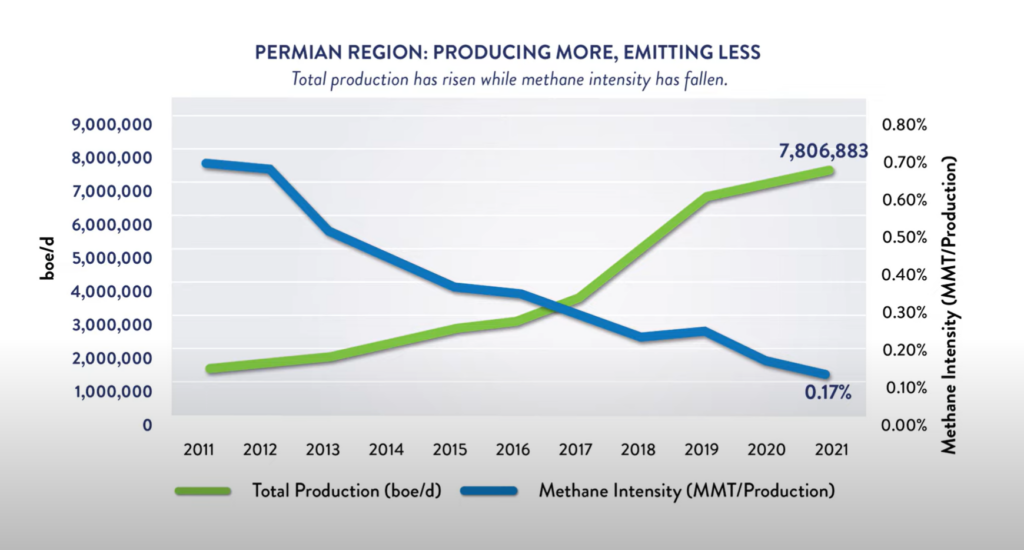Texans for Natural Gas recently released a video highlighting the oil and natural gas industry’s continued commitment towards reducing methane emissions and flaring.
According to the World Bank and U.S. Energy Information Administration, the United States cut flared volumes nearly in half between 2019 and 2021. This is due in large part to the efforts of major producers such as ExxonMobil, which ended routine flaring in its Permian Basin operated assets at year-end 2022 and expects to do the same across its global upstream assets by 2030, and Apache Corporation, which ended routine flaring across its U.S. onshore based operations in 2021.

From 2011 to 2021, methane intensity in the Permian Basin fell 76% to the lowest value in a decade, even as production increased by over 345%.

And in just one year, U.S. flaring decreased by 9% and flaring intensity dropped by 14%, which represents the lowest value recorded for the U.S. in the last ten years. These reductions were achieved while the U.S. also increased oil production by almost 6% between 2021 and 2022.
Texas energy producers continue to invest in new innovative technologies and infrastructure to reduce methane flaring and achieve environmental progress.
The Texas Methane & Flaring Coalition is committed to the goal of ending routine flaring by 2030—which aligns with the World Bank initiative.
